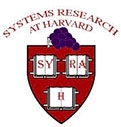4.1 Latency and Update Filters
In previous work, we developed two simple filters that had distinct beneficial effects on a coordinate system running on PlanetLab [18]. The first type, which we call a latency filter, takes the stream of latency measurements from a remote node and turns these into an expected latency value. For a stream of measurements between nodes i and j, the goal of the latency filter is to summarize the measurements, providing a current and stable description of the expected latency between i and j. There were two main considerations affecting the value ![]() . First, anomalous measurements, sometimes several orders-of-magnitude larger than the baseline, would appear in the stream of measurements. For example, we would measure a round-trip time of 1000ms when typical measurements were 200ms. Although we were using application-level UDP measurements, we found these anomalies also occurred with ICMP. Second, the expected value could not be fixed at a single value. Due to congestion and BGP changes, the underlying latency between pairs of nodes changes. We found that using a simple, short, moving median worked as a latency filter compensating for both anomalous measurements and plateau shifts.
. First, anomalous measurements, sometimes several orders-of-magnitude larger than the baseline, would appear in the stream of measurements. For example, we would measure a round-trip time of 1000ms when typical measurements were 200ms. Although we were using application-level UDP measurements, we found these anomalies also occurred with ICMP. Second, the expected value could not be fixed at a single value. Due to congestion and BGP changes, the underlying latency between pairs of nodes changes. We found that using a simple, short, moving median worked as a latency filter compensating for both anomalous measurements and plateau shifts.
The second type of filter we developed on PlanetLab focuses on making coordinates more stable, not more accurate. These update filters tackle a problem shared across many types of applications that use network coordinates: discerning when a coordinate has changed ``enough'' to potentially necessitate an application-level reaction (e.g., a service migration). In an early application we developed that used network coordinates [25], we found it was hard for the application to immediately determine if it should react to coordinate updates, which were occurring several times per minute. A single threshold (``react if moved more than 50ms'') did not work for all nodes because the volume through which each coordinate moved was node-dependent. We developed a generic filtering technique to allow applications to easily determine when to update coordinates. Applications that find all updates useful can bypass the filters.
Update filters make the distinction between constantly evolving ``system-level'' coordinates and stable ``application-level'' coordinates, providing a barrier between these two: system-level coordinates fine tune the coordinate further with each measurement, while application-level coordinates change only when the underlying coordinate has undergone a significant migration to a new location relative to other coordinates. In our previous work, we examined several heuristics for distinguishing between a system-level coordinate that was moving around a single point (not requiring application-level notification) and one that had migrated to a new location (potentially requiring application activity). We found heuristics that compare windows of previous system-level coordinates to one another, especially those that augment this comparison with distances to other nodes in the system, perform well. Applications can tune how much these windows may differ before being notified.
Jonathan Ledlie 2007-02-23